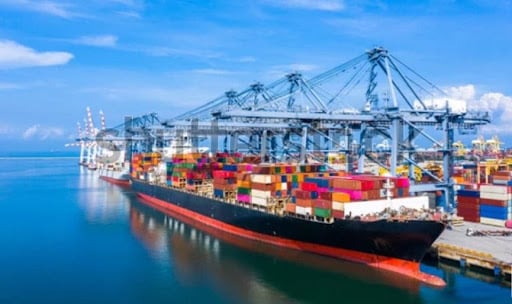Bulk Bag, FIBC, or Super Sack® Bags? What’s in a Name?
Bulk bags, FIBCs, Super Sacks® bags — the terminology surrounding large-scale packaging solutions can be as diverse as the industries they serve.
July 30, 2021
For ocean shipping and air travel, 2020 felt like the year the world stopped. 16 months later, ocean liners and airlines are barely keeping up with demand. Ocean freight rates are skyrocketing and capacity is limited. FIBC producers are struggling to maintain pricing and make on-time delivery. Prices on FIBC bulk bags continue to rise in 2021 and show no sign of relief.

Container freight pricing from Asia to the United States is rising at an extraordinary pace and capacity is expected to remain tight for the rest of the year. The average cost to ship a 40’ container has increased 400% since this time last year.
“Covid has been the biggest boost ever for container ships, with a supercycle which is set to continue,” said Jonathan Roach, a container analyst at London-based Braemar ACM Shipbroking. “The rates have gone ballistic and it doesn’t look like it will change until next year.”
Booking container freight right now feels much like trying to buy a first-class plane ticket to Europe a day before the flight. Options are limited and prices can be exorbitant. In normal times containers could be easily booked for $5,000 or less from India or China to the U.S. Currently, last-minute bookings for sea container freight have been quoted as high as $30,000. Outbound vessels with container spaces available are few and far between. These rates can be catastrophic for bulk bag manufacturers and their customers.
As the world exits from the height of the pandemic, consumer demand for goods has risen dramatically. Bottlenecks and disruptions in worldwide supply chains have caused a rush to restock depleted inventories. Strong demand for overseas goods has put pressure on ocean lines to make delivery. Christmas season goods that normally ship in the summer are exacerbating the lack of container space.
“Now everything is overbooked,” says Philip Damas, head of Supply Chain Advisors at Drewry Group. “Shippers are desperate to book tomorrow. It’s more a bidding war than it is a traditional tariff and this bidding war is accelerating.”
Supply-chain experts say the high rates leave many shippers, particularly those with relatively low-value goods, facing a choice: They can pay the prices and try to pass the costs on to their customers or retreat from overseas markets.
Ocean freight accounts for approximately 10% of a bulk bag’s total cost. The short answer is FIBC prices are expected to increase as ocean freight rates continue to increase. The manufacturer and/or distributor has two options: absorb the cost increase or pass it onto the FIBC customer. Given that FIBC manufacturers and distributors margins’ are generally low, customers should expect to see an increase in the cost of their bulk bags.
Planning FIBC purchases as far in advance as possible will allow time for the freight market to normalize. In addition, purchasing bags out of stock may eliminate the possibility of price spikes for custom orders. Southern Packaging stocks one of the largest inventories of bags in the country. Oftentimes it is to our customers’ advantage to buy bags off-the-shelf as opposed to ordering custom-produced bags. We typically buy large quantities of commonly used sizes and styles and pass the price savings onto our customers. For more information on FIBCs and stock FIBC bulk bags, Super Sack® containers, totes, and jumbo bags email us at info@southernpackaginglp.com.